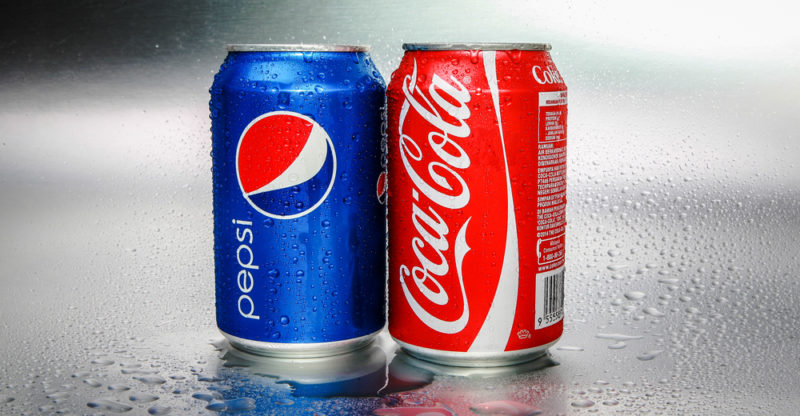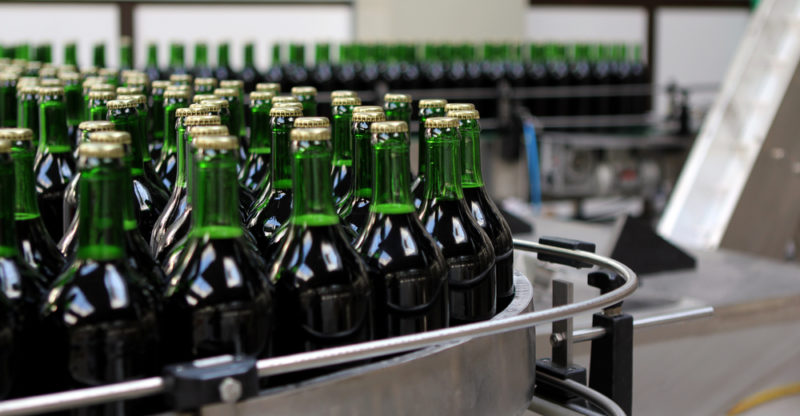We explain what an oligopoly is, its characteristics, and its difference with a monopoly. In addition, we explore the ties between an oligopoly and the state.

What is an oligopoly?
An oligopoly is a market structure in which there are few suppliers selling products or services in an industry without there being direct competitors. As a result, buyers have no product choice in a given market other than those offered by those few companies, and must therefore pay the price they fix.
An oligopoly is the opposite of a free market, which is regulated by the law of supply and demand. In oligopolies, only a few companies dominate a business sector or industry, leading to imperfect competition. Any of the few companies that make up an oligopoly can influence the price of their products in the market.
- For example: Pepsi and Coca-Cola are two leading brands of Pepsico and Coca-Cola Company business groups respectively. Both companies form an oligopoly in the carbonated soft drinks sector worldwide and, although there are alternative brands in the market, none of them competes with the leading brands.
Even if alternative brands modify their prices, it does not influence Pepsico or Coca-Cola prices significantly, as being oligopolistic brands they are well positioned in the mind of consumers.
Etymology: The word oligopoly derives from Ancient Greek oligo meaning "few" and pōlein meaning "to sell". It makes reference to the existence of few sellers. An oligopoly is a market situation in which there are few sellers and many demanders.
An oligopoly does not occur when few brands dominate a certain market, as with Pepsi or Coca-Cola, but rather when few companies or business groups control a whole product category, as is the case with Pepsico and the Coca-Cola company with their entire line of first and second-brand soft drinks.
- See also: Multinational corporation
Characteristics of an oligopoly
The main characteristics of an oligopoly are:
- It is a market structure in which there are few supplier companies and many demanders.
- An oligopoly may arise from the disintegration of a monopoly or the merger of a number of large and medium-sized companies.
- Sellers control the microeconomy, as they have the power to influence market prices for a product category.
- It is very difficult for new sellers to enter the oligopolistic market and compete with established producers, both for capital and investment reasons as well as for market state regulations.
Difference between oligopoly and monopoly
In addition to oligopoly, another type of market structure which is also unregulated by the law of supply and demand is monopoly. A monopoly occurs when a single supplier has the exclusive right to sell and control the market for a given product or service.
- For example: A single company that provides the electricity supply service in a town.
The main difference between an oligopoly and a monopoly is the number of sellers that exist in each one: while in an oligopoly there are a few leading companies, in a monopoly there is a single supplier.
Etymology: The word monopoly derives from the Greek word mono, meaning "one", and pōlein, meaning "to sell". It makes reference to the existence of a single available seller.
- See also: Monopoly
Ties between oligopolies and the state
Capitalism is an economic system in which the means of production are privately owned, and in which the market is regulated by the law of supply and demand with the least possible state intervention.
In a perfect competition market, multiple sellers and many demanders interact. If a supplier or producer modifies the price of their products, it does not alter the product category, as there are many other producers selling at different prices.
However, there are situations that threaten a free market. For example, cases where ties between large companies and the state exist, pursuing individual economic interests and leaving aside the needs of the market and, in particular, those of consumers.
The ties between companies and the state, which allow for the creation of oligopolies, often enrich minority power groups, rather than prioritize benefits for the entire population. If country regulations permit the development of business for the sole advantage of oligopolistic companies, it is considered fraud.
- For example: Agricultural companies that produce and trade genetically modified seeds and herbicides form oligopolies in the global market, partly because they have established agreements in different countries which, due to political decisions and specific regulations which are often fraudulent, have the approval to trade almost exclusively in every country.
As a result, they wipe out small and medium-sized local agricultural producers, forcing them to use biotechnology to continue working the land, at the cost of enriching foreign emporiums and state officials. If national laws were to protect the agriculture sector, farmers, and the population consuming genetically modified products, international oligopolies would not be able to operate at a local level.
Consequences of oligopolies

The main consequences of oligopoly include:
- Difficulty to stay competitive. The local market cannot compete with the structure and prices of oligopolistic companies, meaning that fewer and fewer local entrepreneurs and small businesses are able to remain competitive over time.
- Controlled and planned market. The quantities of goods produced and their market price are subject to the decisions of a few sellers.
- Increased unemployment. The precariousness of the labor force is exacerbated due to the high demand for employment, making it increasingly difficult to start a business or be self-employed to be part of the productive system.
- Fall in Gross Domestic Product (GDP). A country’s economy that loses productive capacity becomes vulnerable to and dependent on foreign businesses, which obtain high profits at the expense of the exploitation of local resources.
Examples of oligopoly
Arcor Group is a multinational company that operates in three areas: agribusiness, consumer food products, and packaging. It sells a wide variety of products and brands (some of which are own and others acquired over time), such as La Campagnola and its line of canned jams and preserves, BC and its line of juices, and Aguila line of chocolates.
Among its main competitors is the Danone group, which sells dairy products, foods, and soft drinks, and PepsiCo, which sells multiple food, snack, and carbonated soft drinks.
Arcor, Danone and Pepsico each form a group of different companies that have merged to become multinational oligopolies concentrating the sale of multiple brands in different product categories. At first glance, consumers do not recognize different brands as belonging to a single company, which is a disguised way for companies to dominate and control the market.
References
- Educatina (2013). Oligopolio. https://www.youtube.com/.
- Melo, S. (2019). La leche, mala e inalcanzable. http://elortiba.org/.
- Santaella, J. (2022). ¿Qué es un oligopolio y cómo afecta al desarrollo de la economía. https://economia3.com/.
Related articles:
Was this information useful to you?
Yes NoThank you for visiting us :)